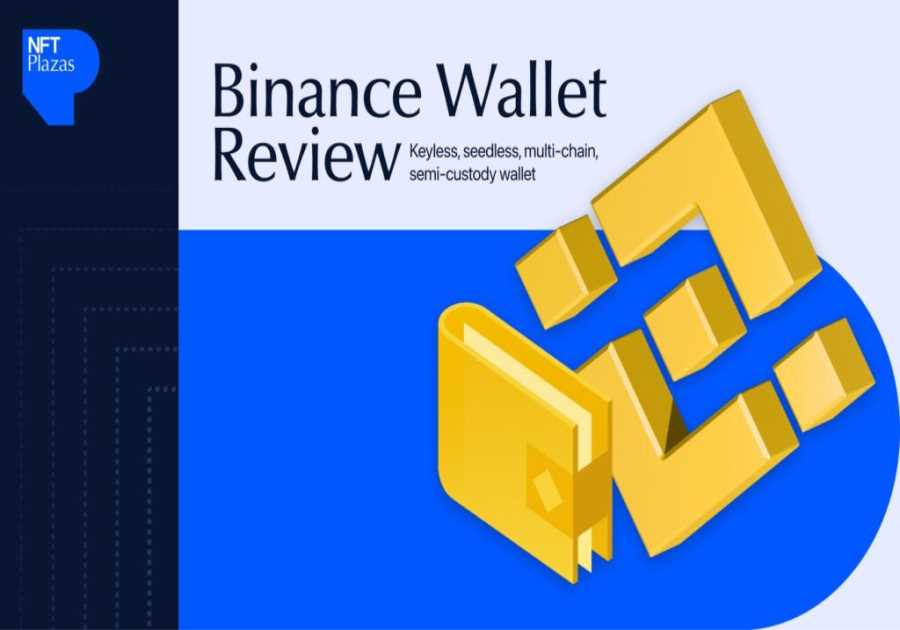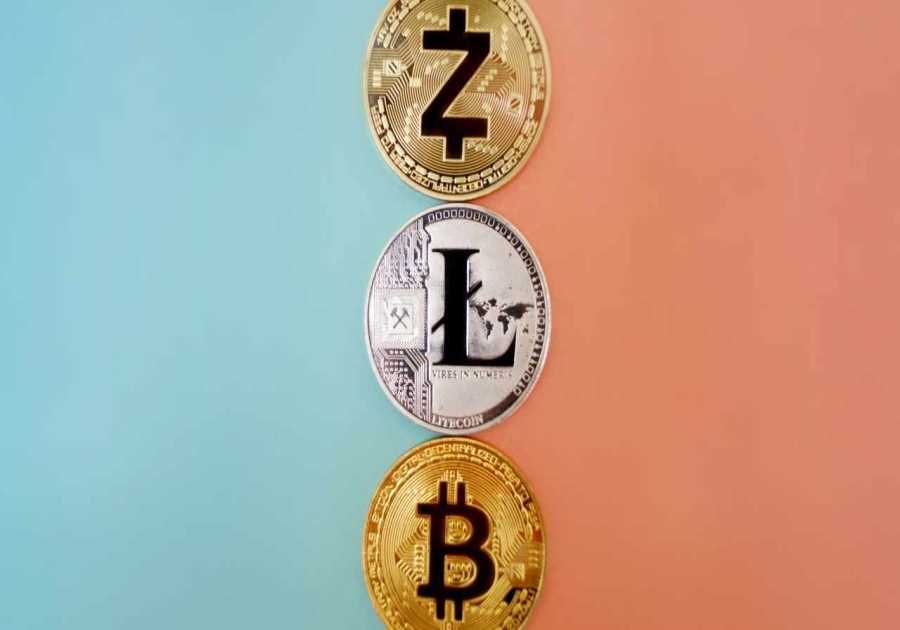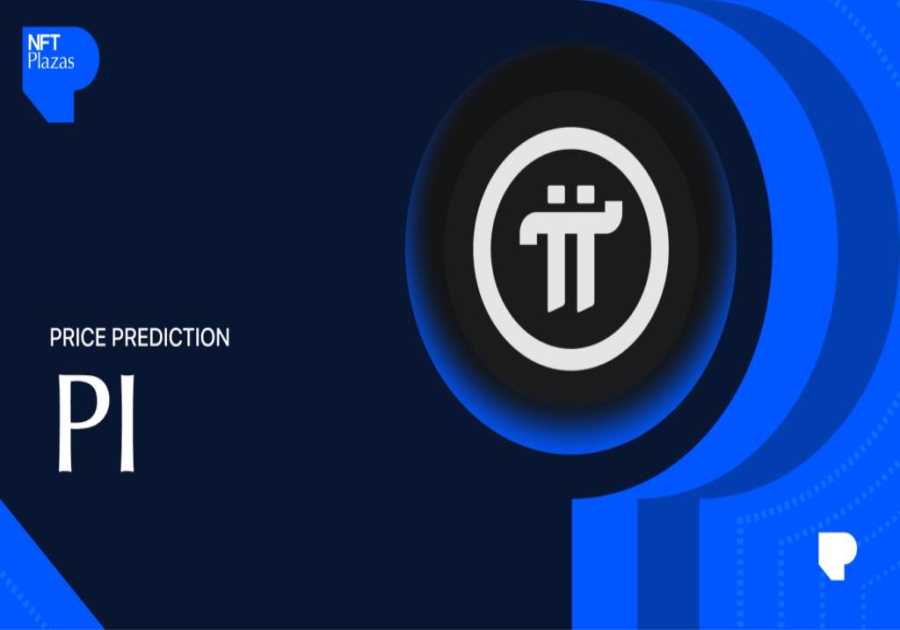In recent months, the NFT market has experienced a downturn. Trade volumes have decreased, and fewer newcomers are entering the space. But, can open edition NFTs turn this around?
As a result of the bear market, NFT projects and artists have been adapting their strategies to expand the reach of their artwork and attract more attention. Among the methods gaining new attention is the use of open edition NFTs. Unlike projects that limit their collections to a specific number of NFTs, such as 10,000 editions, open edition projects allow for the minting of an unlimited number of artwork editions. This approach offers a refreshing contrast and provides opportunities for greater participation and accessibility in the NFT market.
So, in this guide we’ll dive into what an open edition is, why they’re popular, and even how you can create an open edition collection yourself.
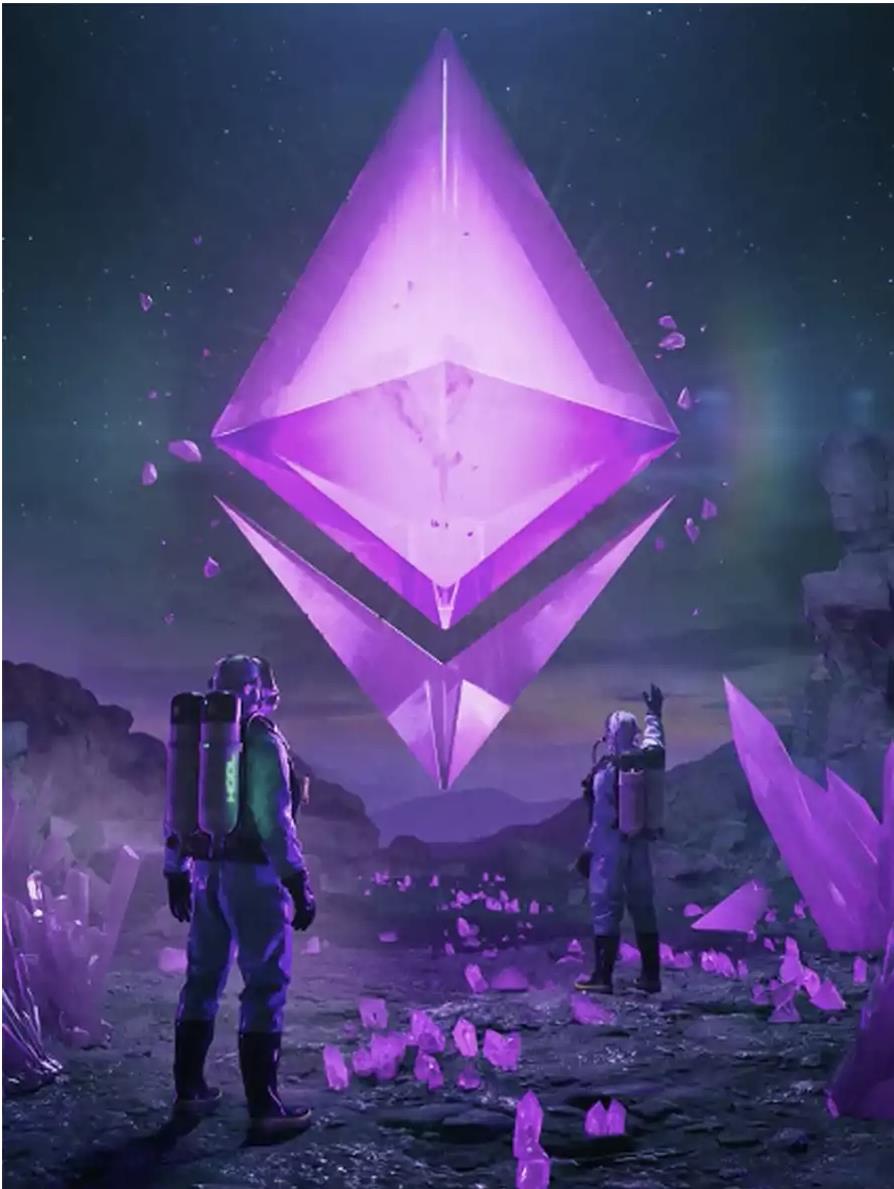
The Revolution of Open Edition NFTs. Image: Beeple’s Into The Ether
What is an Open Edition NFT?
Simply put, an open edition NFT is an NFT not limited to a specific number of copies. So, unlike limited edition NFTs with a predetermined scarcity, open edition NFTs can have an unlimited supply. This means that the creator can continuously mint and sell new copies of the same NFT.
In the world of art and collectibles, open edition NFTs offer a different dynamic. They allow artists and creators to reach a wider audience by making their work more accessible. Essentially, anyone can own a unique digital asset without worrying about missing out due to limited availability.
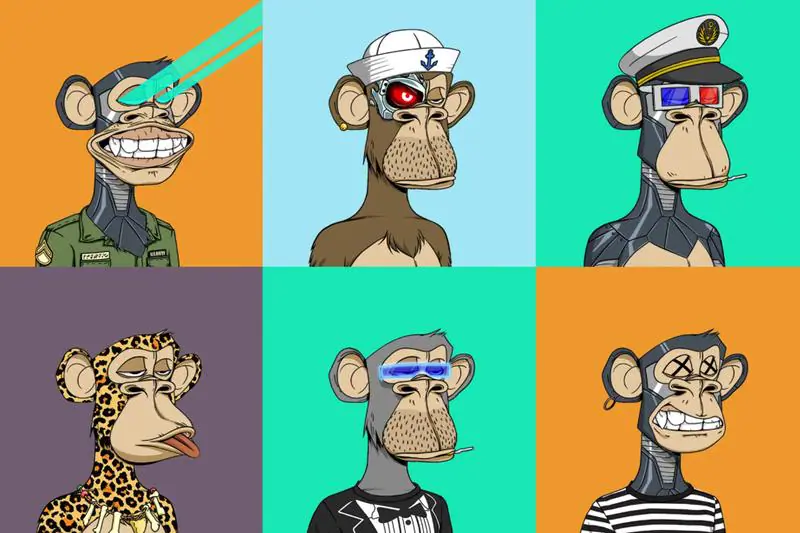
The Allure and Scarcity of Limited Edition NFTs. Image: Bored Ape Yacht Club.
What’s the Difference Between Open Editions and Limited Editions?
Limited edition NFTs are the most common and popular method for releasing NFT collections. In this approach, the total number of NFTs that will exist is predetermined and fixed. For example, renowned profile picture NFT projects such as Bored Ape Yacht Club and Azuki. Both have released collections consisting of precisely 10,000 NFTs. Additionally, these limited edition collections are often priced higher and place great emphasis on selling out. This is to create a sense of exclusivity and rarity.
In contrast, there is no specific cap on the number of NFTs that can be created with open edition NFTs. Typically, collectors are given a specific time window during which they can mint an NFT from the open edition collection. Then, once the time limit expires, the number of NFTs in the collection becomes capped. For instance, if a collection offers NFTs for sale over a 24-hour period and ten NFTs are minted during that time, the collection will be limited to ten.
Moreover, creators of open edition collections can choose to restrict the number of mints allowed per crypto wallet. Thus, aiming to keep the collection size small and increase its scarcity. This approach adds an additional layer of exclusivity and rarity to the NFTs in the collection. Essentially, it makes them even more desirable among collectors.
ERC-1155 and ERC-721 Token Standards
Open edition NFTs take advantage of the ERC-1155 multi-token standard, which differs from the usual ERC-721 standard used by NFTs.
So, what does this mean? The Enjin team created the ERC-1155 smart contract standard as part of the EIP-1155 proposal. It offers a unique and versatile smart contract standard that enables the creation of both ERC-20 and ERC-721 tokens within a single contract. This means that with an ERC-1155 contract, you can create fungible, non-fungible, and semi-fungible tokens. In addition, you can create multiple NFTs, without the need to develop a new contract every time.
In the context of open edition NFTs, when collectors mint art pieces, they are mapped to a single contract instead of requiring the creation of a new contract for each mint. Previously, developers had to write new contracts whenever they wanted to introduce a new type of smart contract token or a variation of an existing token. The ERC-1155 standard simplifies this process. It also offers additional features such as batch transfer of tokens and easy-to-implement atomic swaps. Ultimately, open edition NFTs benefit from the ERC-1155 standard.
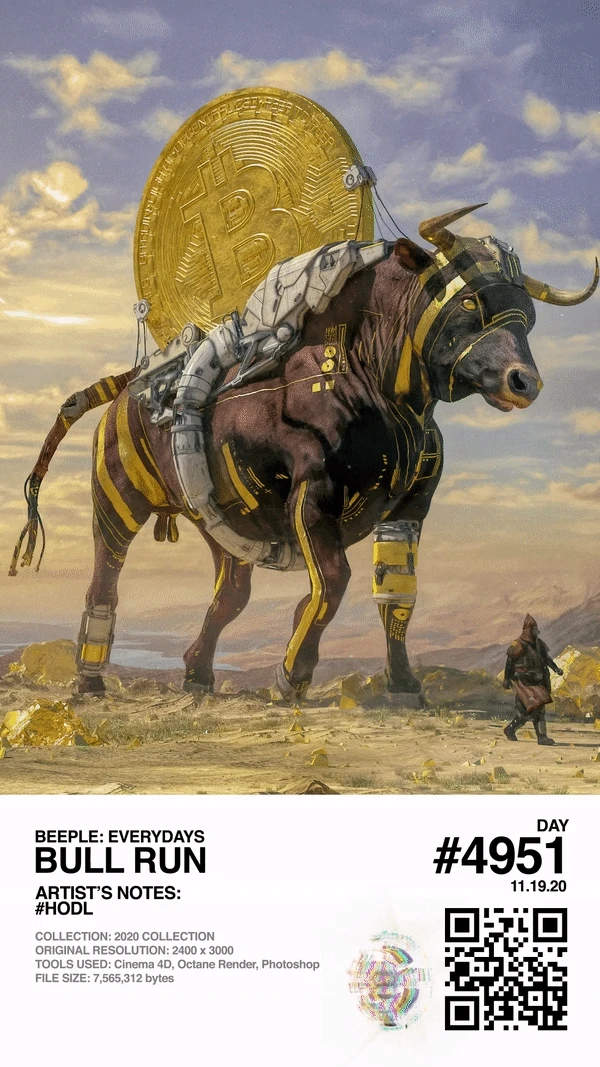
Challenging Limited Edition NFT Norms. Image: Beeple’s Bull Run.
Why are Open Edition NFTs Popular?
Open edition NFTs have gained popularity for several reasons. Firstly, they promote inclusivity. By deviating from the usual protocols followed by limited NFT creators, such as allowlists, an open drop has the potential to attract a diverse community of collectors. This includes those who are not necessarily NFT investors and those new to the space.
Additionally, the fact that anyone can participate fosters a strong sense of community and engagement. Without the FOMO, collectors can focus on appreciating the artwork, understanding the project’s mission, and getting to know the artist behind it. This leads to ongoing interaction, discussions, and collaborations within the community, creating a lively and supportive environment for the open edition NFT project.
Ultimately, open edition NFTs often appeal to both collectors and creators alike. Collectors appreciate the opportunity to acquire artwork or digital items they admire without the pressure of scarcity. Creators benefit from the potential for increased exposure, sales, and engagement as they can continuously offer their creations to interested buyers.
Some of the Most Famous Open Edition NFTs
Now, let’s take a look at some famous examples of open edition NFTs. Firstly, Beeple released a trio of open edition NFTs, consisting of Bull Run, Infected, and Into the Ether, with a price tag of $969 each. Surprisingly, Beeple managed to sell 601 of these NFTs, breaking away from the traditional limited edition approach and setting a new trend among renowned creators.
In the following year, XCOPY, a prominent artist in the crypto space known for their glitchy and dystopian artwork, unveiled a 90-minute-long open edition of three works: Traitors, Afterburn, and Guzzler. This remarkable release garnered over $2 million in sales. However, XCOPY’s later open edition collection, Max Pain, soon surpassed the record in 2022. Significantly, this managed to raise a staggering $23 million in just 10 minutes with their open edition NFT release.
Additionally, visual artist Jack Butcher created Checks, an open edition NFT collection inspired by the renowned Twitter checkmark. Every NFT in this collection showcases 80 checkmarks reminiscent of the Twitter verification logo. In a 24-hour mint held on January 3, 2023, a total of 16,027 NFTs were quickly sold out at a price of $8 each, mirroring the fee Twitter charges for verification.
Finally, let’s look at Drift, a daring NFT photographer known for climbing buildings and capturing mesmerizing shots of his shoes from dizzying heights. In April 2022, he celebrated his release from prison by minting an open edition NFT. Aptly titled First Day Out, this unique collection resonated with audiences, resulting in the sale of an astounding 10,351 editions. With each edition priced at 0.2 ETH, the total sales reached a staggering $6.8 million.
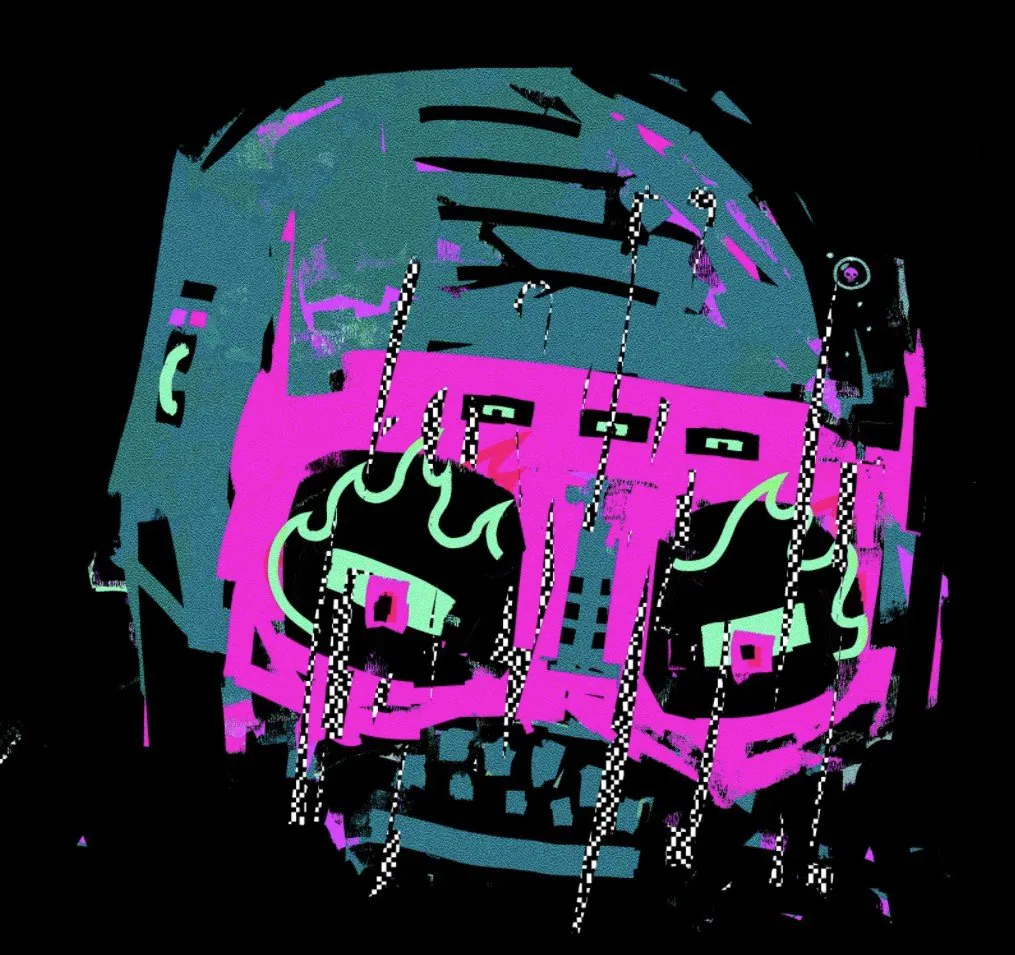
XCOPY’s Max Pain Open Edition Raises $23 Million in 10 Minutes.
How do I Create an Open Edition NFT?
The process of creating an open edition NFT is similar to creating any NFT collection – without selecting a collection size, of course. First, you’ll need to choose a platform that supports NFT creation and minting. Some examples include OpenSea, Manifold Studio, Rarible, and Mintable. You’ll also need a digital wallet that is compatible with the chosen platform. Popular wallet options include MetaMask, Trust Wallet, or Coinbase Wallet.
Next, you’ll need to prepare the digital artwork you want to turn into an NFT. Follow the platform’s guidelines regarding file formats, sizes, and quality. You can also add relevant information like the title, description, and artist details. Finally, mint the NFT! For open edition NFTs, there is no fixed edition size, so you can skip this step or set a maximum cap depending on the platform chosen.
Finally, while limited edition NFTs may hold a certain prestige due to their scarcity, open edition NFTs bring inclusivity and flexibility to the NFT space. They allow for ongoing creation and distribution, fostering a dynamic and evolving market where artists and collectors can engage with each other on a broader scale.
The post Open Edition NFT Guide, a Complete History appeared first on NFT Evening.
Read MoreBy: Emily Neale
Title: Open Edition NFT Guide, a Complete History
Sourced From: nftevening.com/open-edition-nft-guide-a-complete-history/
Published Date: Tue, 13 Jun 2023 08:24:07 +0000
----------------------------
Did you miss our previous article...
https://trendingincrypto.com/nft-news/metaverse-dreams-vs-reality-law-firms-hit-a-plateau-in-virtual-office-adoption
.png)


